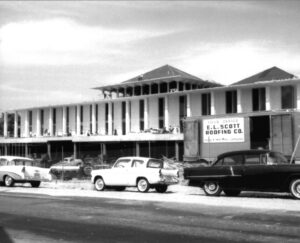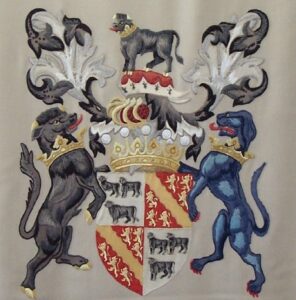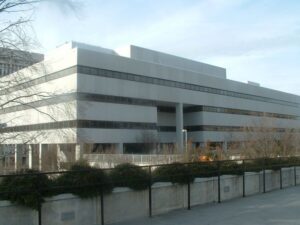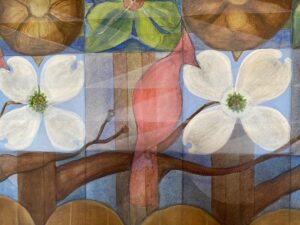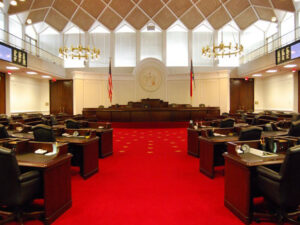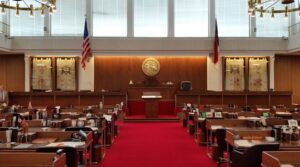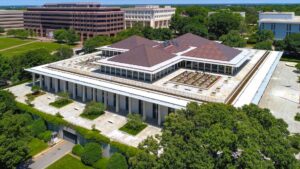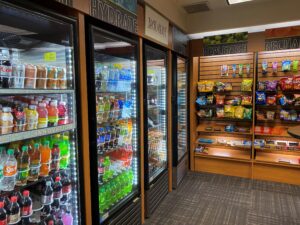Legislative Building Timeline
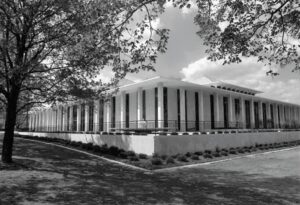
Formal ground breaking at the Legislative Building site was on December 28, 1960 and construction began about 2 weeks later.
The General Assembly’s inaugural session on February 6, 1963.
Presented to the people of the State on April 21, 1968. Each panel depicts the coats of arms of two of the Lords Proprietors of the Carolina Colony, which was chartered by King Charles II in 1663. The tapestries were done in the single-eye needle fashion of hand embroidery by Arthur H. Lee and Sons Tapestry Works at Birkenhead, England.
Construction began in 1979 and the Legislative Office Building opened in 1982.
Created by artists James and John Biggers from Gastonia, this 1994 mural reads like an unfolded map of North Carolina.
Inside the quilt-like design are the topography, industry and symbols of the state from the mountains to the coast. The lower register depicts children playing with toy models. Each toy refers to a particular aspect of North Carolina’s history and culture.
The chamber remodel included new cherry desks, red carpet with 50 gold stars, permanent benches along the wall for staff members and a new Senate seal.
The makeover included installation of wood paneling behind the Speaker’s dais and addition of electric outlets and data ports at all members’ desks.
Snack vending room opened – for fueling up and recharging during those long legislative days. Sine Dine was named via NCGA staff naming contest.
Committee rooms underwent asbestos abatement and complete renovation. They received new carpet and furniture and were rewired to accommodate an audio feed, so the public can listen in to committee meetings.

